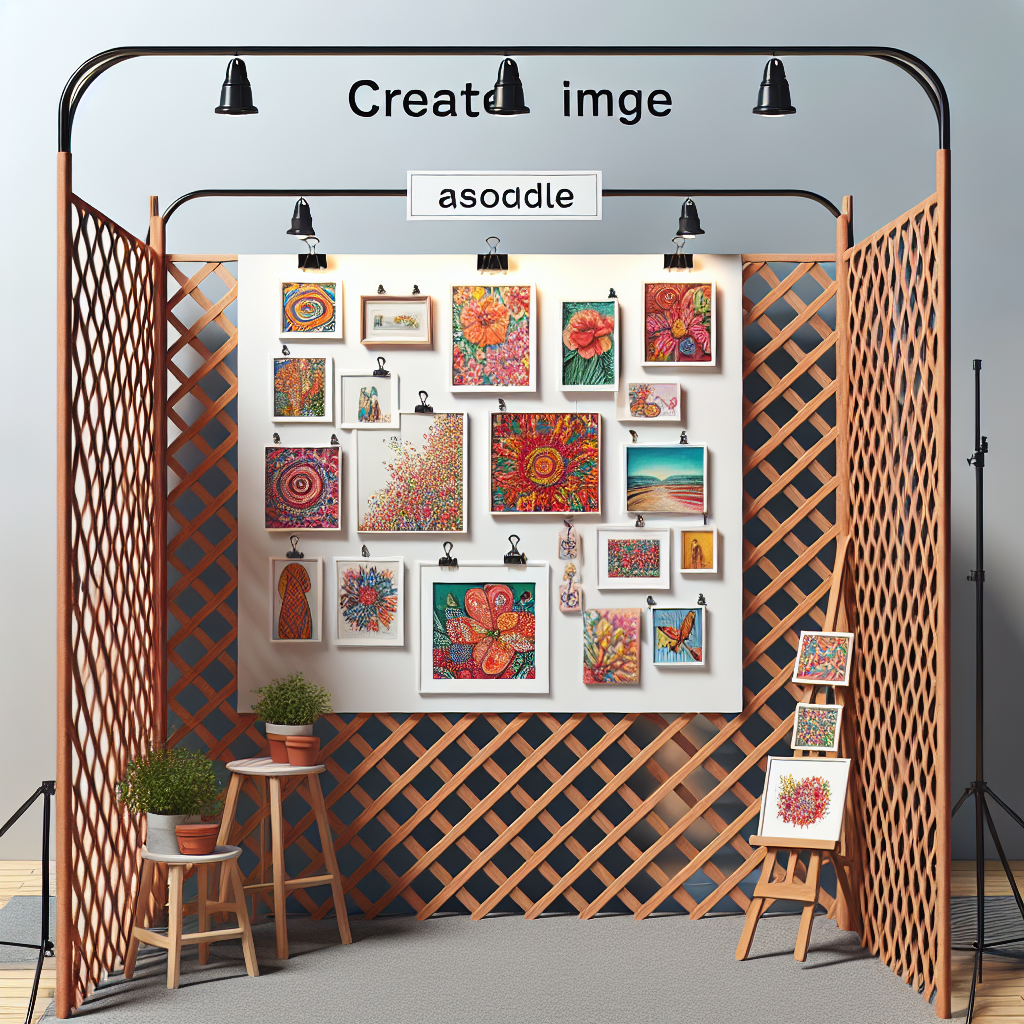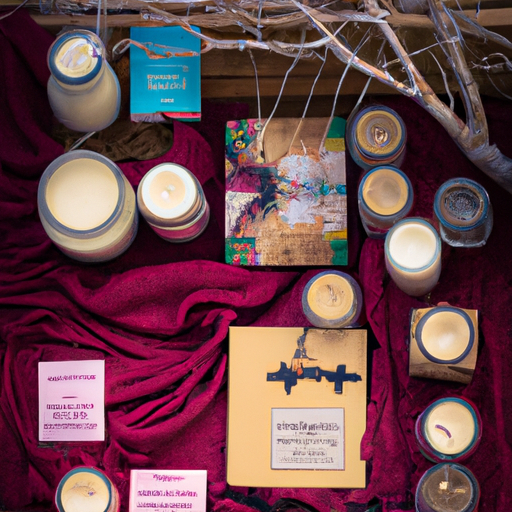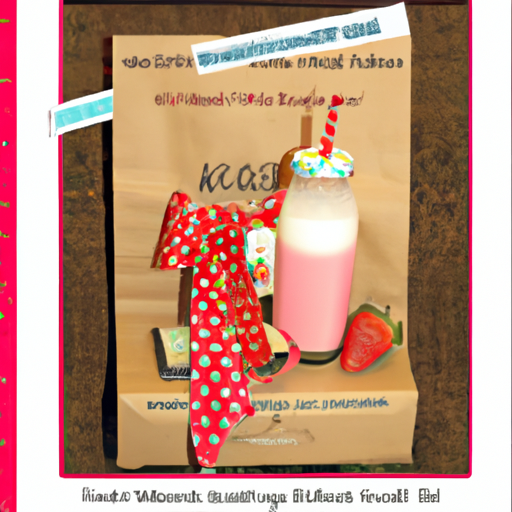Hello there! Today, I have some fantastic tips for you on selling at craft fairs. In a video by Emily Harvey Art, she shares her top tips and experiences from her recent craft fair. Emily emphasizes the importance of table display and branding, using social media to promote the event, practicing the set-up beforehand, having items at different price points, utilizing card readers for payment, making prices and information clear and visible, and considering stock and inventory. She also touches on the importance of having insurance, where to buy materials and table decorations, and the benefits of having a friend or assistant at the event. Overall, Emily encourages you to enjoy the experience and have fun at the craft fair. So, if you’re planning to sell at craft fairs or are new to the scene, her tips will surely help you have a successful and enjoyable time.
Importance of table display and branding
When it comes to selling at craft fairs, one of the most important aspects to consider is your table display and branding. A well-organized and visually appealing table can attract more customers and make them more likely to browse and make a purchase.
Organizing your table
The first step in creating an attractive table display is to organize your items in a way that is visually appealing and easy for customers to navigate. Consider arranging your products in a way that makes sense, such as grouping similar items together or organizing them by color or theme. This will make it easier for customers to find what they are looking for and encourage them to spend more time at your table.
Creating a cohesive look
In addition to organizing your products, it is important to create a cohesive look for your table. This means considering the colors, materials, and overall aesthetic of your branding and incorporating them into your display. Using consistent colors and materials throughout your table will help to create a professional and polished look, and make it easier for customers to recognize your brand.
Using signage and banners
Another way to enhance your table display and increase brand visibility is by using signage and banners. These can be used to showcase your brand logo, display product information, or promote any special offers or promotions you may have. It is important to create clear and legible signage that is easy to read from a distance, so that customers can quickly and easily understand what you are offering.
Showcasing your brand identity
Lastly, your table display should reflect your brand identity and what sets your products apart from others. Whether it’s through unique packaging, handcrafted signs, or personalized touches, incorporating elements of your brand identity into your table display will help to make it more memorable and create a lasting impression on customers.
Use of social media to promote the event
In today’s digital age, social media has become a powerful tool for promoting events, including craft fairs. Utilizing social media can help you build anticipation for the event, engage with your audience, and ultimately increase foot traffic to your table.
Creating a social media plan
Before the craft fair, it is important to create a social media plan to ensure that you are effectively promoting the event and generating buzz. This plan should include a schedule for posting about the event, including details such as the date, time, and location. It is also beneficial to create engaging content, such as behind-the-scenes peeks of your preparation process or sneak peeks of the products you will be selling. This will help to build excitement and generate interest from your followers.
Building anticipation
Building anticipation is key to driving attendance to the craft fair. One way to do this is by creating teasers or countdown posts leading up to the event. This can help generate excitement and encourage your audience to mark their calendars and make plans to attend. Additionally, consider reaching out to local influencers or bloggers who may be interested in attending or promoting the event to their followers.
Engaging with your audience
Social media provides a unique opportunity to engage with your audience and build a sense of community around your brand. Encourage your followers to ask questions, leave comments, and share their thoughts or excitement about the upcoming craft fair. Responding to comments and messages in a timely manner will help foster a positive relationship with your audience and make them feel valued.
Running giveaways or contests
To further promote your involvement in the craft fair, consider running giveaways or contests on social media leading up to the event. This can help generate buzz and excitement, as well as attract new followers to your social media accounts. Encourage participants to share the giveaway or contest post with their followers, which will help to increase visibility and reach.
Importance of practicing the set-up before the fair
Preparing and practicing your display set-up before the craft fair is crucial for a smooth and stress-free experience. By setting up your display at home and timing the process, you can identify any potential issues and make necessary improvements or adjustments.
Preparing your display at home
Before the fair, it is recommended to prepare your display at home to ensure that everything is in order and to familiarize yourself with the set-up process. This involves gathering all the necessary materials, including tables, tablecloths, signage, and product displays. Setting up your display at home will give you a clear understanding of what is needed and allow you to make any adjustments or modifications before the actual event.
Timing the setup process
Timing the set-up process is essential for a smooth and efficient experience on the day of the craft fair. By timing how long it takes you to set up your display at home, you can better estimate the amount of time you will need on the actual day. This will help you plan your schedule and ensure that you have enough time to set up before the fair opens.
Identifying any issues
Setting up your display at home will also allow you to identify any potential issues or challenges that may arise during the actual event. This may include problems with table configuration, product placement, or signage visibility. By addressing these issues beforehand, you can come up with solutions or alternatives to ensure a seamless and visually appealing display.
Making improvements and adjustments
Finally, practicing the set-up process at home gives you the opportunity to make improvements and adjustments to your display. This may include rearranging products for better visibility, refreshing signage, or making changes to the overall layout. With a well-planned and well-practiced setup, you can make the best use of your space and create an inviting and eye-catching display that will attract customers.
Having items at different price points
When selling at craft fairs, it is important to cater to customers with different budgets by offering items at different price points. By providing affordable options, mid-range choices, and high-end products, you can appeal to a wider range of customers and increase your chances of making sales.
Offering affordable options
Having affordable options is essential for attracting customers who may be on a tight budget or looking for small, inexpensive gifts. This can include products such as stickers, pins, or small prints that are priced at a lower range. By offering these affordable options, you can generate more sales and attract customers who may not have been able to afford higher-priced items.
Providing mid-range choices
Mid-range choices are ideal for customers who are willing to spend a bit more for higher quality or more substantial products. This can include items such as medium-sized prints, notebooks, or handmade accessories that are priced in the middle range. By offering mid-range choices, you can capture the attention of customers who are looking for something more than a small trinket but may not be able to afford high-end items.
Having high-end products
Having high-end products is important for customers who are specifically looking for unique, one-of-a-kind pieces or higher-priced items. This can include original artwork, limited edition prints, or custom-made products that are priced at a higher range. By offering high-end products, you can attract customers who want something special and are willing to pay a premium for it.
Catering to various budgets
By offering items at different price points, you can cater to customers with various budgets and ensure that there is something for everyone. This not only increases your chances of making sales, but also allows you to reach a wider audience and expand your customer base. By providing a range of options, you can accommodate different tastes, preferences, and financial capacities, ultimately increasing your chances of success at the craft fair.
Utilizing card readers for payment
In today’s cashless society, it is essential to offer convenient payment options to customers at craft fairs. Utilizing card readers allows you to accept credit and debit cards, making it easier for customers to make purchases and increasing your chances of making sales.
Accepting credit and debit cards
By accepting credit and debit cards, you open up your business to a larger customer base and eliminate the need for customers to carry cash. This is especially important at craft fairs, where customers may not have a large amount of cash on hand or may not want to make a trip to the ATM. By accepting cards, you can ensure that customers can purchase your products using the most convenient method for them.
Using mobile card readers
Mobile card readers are a convenient and portable way to accept card payments at craft fairs. These devices can connect to a smartphone or tablet and allow you to securely process payments on the go. Mobile card readers are often easy to set up and use, making them a practical and efficient option for small businesses or independent sellers.
Ensuring secure transactions
It is important to prioritize the security of card transactions when utilizing card readers at craft fairs. This includes using reputable card reader providers that have security measures in place to protect customer data. Additionally, it is important to keep customer information secure and follow best practices for handling and storing data. By ensuring secure transactions, you can give customers peace of mind and build trust in your business.
Offering convenient payment options
By offering card payment options, you can provide a convenient and seamless purchasing experience for customers at craft fairs. With cashless transactions becoming more common, it is essential to keep up with customer expectations and offer payment methods that align with their preferences. By providing convenient payment options, you can increase customer satisfaction and make the purchasing process as smooth as possible.
Making prices and information clear and visible
Clear and visible pricing and information are essential for customers to quickly understand the details and make informed purchasing decisions. By ensuring that prices are clearly labeled, product details are easily accessible, and any special offers or promotions are highlighted, you can create a positive and transparent shopping experience for customers.
Using clear and legible signage
Signage plays a crucial role in making prices and information clear and visible to customers. By using clear and legible signage throughout your table display, you can ensure that customers can easily understand the details of each product. This includes labeling prices, displaying product names or descriptions, and indicating any special offers or promotions. It is important to place signage at eye level and in areas where it can be easily seen by customers.
Including pricing tags on each item
To avoid confusion and make pricing information readily available, it is important to include pricing tags on each item. This allows customers to quickly and easily see how much each product costs without having to ask or search for a price list. It is recommended to use consistent and uniform pricing tags that are easy to read and understand.
Providing product details and descriptions
In addition to pricing, providing product details and descriptions is important for customers to understand the features and benefits of each item. This can include information such as materials used, dimensions, care instructions, or any other relevant details. By providing clear and concise product descriptions, you can help customers make informed decisions and feel confident in their purchases.
Highlighting any special offers or promotions
If you have any special offers, promotions, or discounts available, it is important to highlight them to customers. This can be done through signage, banners, or verbal communication. By making these special offers clearly visible, you can attract customers’ attention and encourage them to take advantage of the deals. This not only helps to increase sales but also creates a sense of excitement and urgency among customers.
Marketing materials such as business cards and leaflets
Marketing materials such as business cards and leaflets are valuable tools for promoting your brand and providing potential customers with essential information about your products and services. By designing professional business cards and creating informative leaflets or brochures, you can effectively communicate your brand message and encourage customers to connect with you.
Designing professional business cards
Business cards are a compact and convenient way to provide potential customers with your contact information and make a lasting impression. When designing your business cards, it is important to choose a professional and eye-catching design that reflects your brand identity. Include essential information such as your name, business name, contact details, and website or social media links. Distribute your business cards to interested customers or use them as a handy tool for networking and connecting with other vendors or industry professionals.
Creating informative leaflets or brochures
Leaflets or brochures are a more comprehensive marketing tool that allows you to provide detailed information about your products, services, or upcoming events. Use leaflets or brochures to showcase your best-selling products, share customer testimonials or reviews, or offer a glimpse into your creative process. Include high-quality images, engaging content, and contact information so that potential customers can easily reach out to you or find more information.
Including contact information
No matter which marketing materials you choose to use, it is essential to include your contact information. This includes your business name, email address, phone number, and website or social media details. By providing multiple ways for customers to reach you, you can increase your chances of connecting with interested buyers and potential collaborators.
Adding website and social media details
In addition to contact information, it is important to include your website and social media details on your marketing materials. This allows potential customers to easily find and follow you online, which can lead to increased brand visibility and engagement. Be sure to regularly update your website and social media accounts with new products, promotions, or other relevant content to keep your audience engaged and informed.
Considerations for stock and inventory
When participating in a craft fair, it is important to carefully consider your stock and inventory to ensure that you have enough products on hand without overstocking or understocking. By estimating the amount of stock needed, tracking inventory levels, and ordering materials in advance, you can manage your stock effectively and maximize your sales potential.
Estimating the amount of stock needed
Estimating the amount of stock needed for a craft fair can be challenging, as it requires finding a balance between having enough products to meet demand without having excessive leftover inventory. To estimate the amount of stock needed, consider factors such as the duration of the fair, the anticipated foot traffic, and your past sales data. It can be helpful to create a spreadsheet or inventory tracker to keep track of your stock levels and make informed decisions.
Tracking inventory levels
Tracking inventory levels is essential for keeping stock organized and avoiding stockouts or overstocking. Regularly update your inventory tracker or system to reflect sales, returns, and any new purchases or production. By doing so, you can quickly identify which products are selling well and which may need to be restocked. Use this information to inform your ordering or production decisions to ensure that you always have enough stock on hand for customers.
Ordering materials in advance
To avoid last-minute shortages or delays, it is recommended to order materials or supplies in advance of the craft fair. This includes any raw materials, packaging, or additional products that you may need to restock. By planning ahead and ordering in advance, you can ensure that you have everything you need to fulfill customer orders and maintain a well-stocked display throughout the event.
Avoiding overstocking or understocking
Finding the right balance between overstocking and understocking can be challenging, but it is important to avoid both extremes. Overstocking can result in excessive inventory, tying up your finances and taking up valuable storage space. On the other hand, understocking can lead to missed sales opportunities and disappointed customers. Regularly analyze your sales data and adjust your stock levels accordingly, ensuring that you have enough products to meet demand without having excessive inventory left over.
Importance of insurance for craft fairs
When participating in craft fairs, it is important to consider the importance of insurance to protect yourself, your products, and your equipment. Understanding liability insurance, researching insurance options, and knowing how to handle potential accidents or damages can give you peace of mind and protect your business.
Understanding liability insurance
Liability insurance is a type of insurance that protects you from claims or lawsuits resulting from accidents or injuries that occur at the craft fair. This can include slip and fall accidents, product-related injuries, or damage to property. Liability insurance can help cover legal fees, medical expenses, or damages that may arise from these situations. It is important to understand the coverage provided by your liability insurance policy and ensure that it is tailored to the specific risks and needs of your business.
Protecting your products and equipment
Craft fairs can involve a lot of movement and transportation of products and equipment, making it important to protect your valuable assets. This can include your inventory, displays, packaging materials, and any equipment you use to process sales. Consider options such as property insurance or inland marine insurance to protect your products and equipment from damage or theft during transit or while at the craft fair.
Researching insurance options
When it comes to insurance for craft fairs, it is important to research your options and find a policy that suits your needs and budget. Consider reaching out to insurance providers that specialize in small businesses or craft fairs, as they may have tailored solutions that fit your specific requirements. Take the time to compare coverage, costs, and customer reviews to ensure that you choose the right insurance policy for your business.
Handling any potential accidents or damages
Even with insurance in place, accidents or damages may still occur at craft fairs. It is important to have a plan in place for how to handle these situations. This may include having a first aid kit on hand, knowing emergency contact numbers, and ensuring that you have a clear process for documenting and reporting any accidents or damages that occur. Being prepared and proactive when it comes to accidents or damages will help you navigate these scenarios and protect your business.
Overall, enjoy the experience and have fun at the craft fair.
While there are many important factors to consider when selling at craft fairs, it is crucial to remember to enjoy the experience and have fun. Craft fairs provide a unique opportunity to showcase your products, connect with customers, and immerse yourself in a creative and supportive community. Embrace the chance to meet new people, share your passion for your craft, and learn from others in the industry. By approaching the craft fair with a positive mindset and a genuine enthusiasm for your products, you can create a memorable and successful experience for both yourself and your customers.



